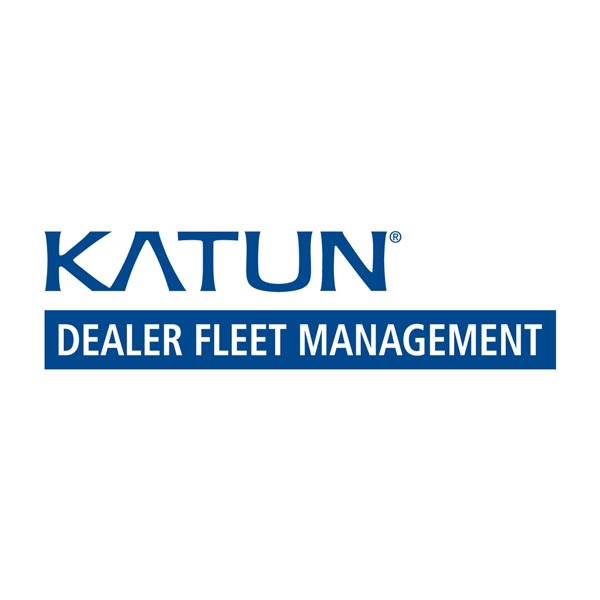Middle: Rick Taylor, President and COO, Konica Minolta Business Solutions U.S.A., Inc. flanked by The Cannata Report’s CJ Cannata, SVP, Brand Strategy and Development (left) and Frank G. Cannata, President, Editor-in-Chief and Publisher, at The Cannata Report’s 30th Anniversary Awards & Charities Dinner at Meadow Wood Manor in Randolph, N.J.
The Cannata Report’s Nine-time Award-winner Emphasizes Evolving Work Styles, Information Management and Strategic Recruitment

Rick Taylor enthusiastically poses with his 7th “Best Executive” award over the past decade, and his 9th in total, at The Cannata Report’s 30th Anniversary Awards & Charities Dinner at Meadow Wood Manor in Randolph, N.J.
I recently had the opportunity to chat with Rick Taylor, President and COO, Konica Minolta Business Solutions, U.S.A, Inc. on the heels of his most recent win as “Executive of the Year” at The Cannata Report’s 30th Anniversary Awards & Charities Dinner. We discussed the future of the office products, document management, imaging and business technology industry with a focus on the SMB space, or companies with 500”“1000 employees who are aggressively seeking comprehensive solutions to optimize productivity in increasing numbers. Given Taylor’s overall perspective, the future is so bright, it’s almost blinding””and we couldn’t agree more. So, put on a pair of sunglasses and enjoy the read.
CJ: Your unmatched run as “Executive of the Year” coincides with an exhilarating, yet challenging time for the industry. What are your thoughts on how the business has changed in the last 10 years and how has it been effected by the overall business climate?
RT: Despite the economic climate over the past decade, a lot of new revenue and profit-generating opportunities have opened up””enterprise information and content management, managed IT services, ECM, production and industrial print””that have enabled us to become a more valuable partner to our dealers and end-users overall. Providing a tremendous customer experience has only become more important as we try to optimize these opportunities.
CR: As President and COO of the U.S. operation of a modern global business technology manufacturing company, what do you see as the biggest challenge in the years ahead given the volatility in the economy?
As technology enhances the ability to work anywhere and at any time, our focus and our biggest challenge is to stay ahead of the curve and adapt our business to support the future workforce’s changing work styles.
To meet that challenge, Konica Minolta will continue to focus on the way people need and want to work, while providing them with the tools necessary to manage the explosion of information available to them. Our priority is to optimize the ability to make decisions anytime, anywhere.
We see our sales team of the future as technical consultants who will help customers transform their businesses to support a mobile workforce in a smart office environment.
CJ: What do you think is the most critical issue facing the imaging segment of the business technology industry, and specifically Konica Minolta, today?
RT: I think staffing our organizations””especially within the independent dealer channel””with the best human capital is a key to success in the future.
As we continue to evolve and integrate areas of technology into our business, like enterprise information and content management, managed IT services, 3D printing and production print, we must recruit a vast array of talent with the necessary specialized skills””engineers, software developers, marketers and certainly strong salespeople.
For example, an engineering background and an understanding of workflow and software in enterprise information and content management is now required for positions in Managed IT Services, an area where there is great demand for top talent.
Companies like Konica Minolta who are technology-led and research-driven offer tremendous opportunities for the millennial workforce, particularly those with a technology background.
That said, we are currently developing programs for our dealer partners that will help them recruit, educate and retain specialists essential to ensuring future success.
CJ: The U.S. dealer community is at a crossroads. Given the maturity of the market pertaining to the copying and printing of documents, what do you see as key for dealers to sustain their businesses moving forward?
RT: There will be pressure on our old business model because there will be less reliance on printed documents, but there will not be less information available. We [Konica Minolta and our independent dealer customers] must evolve into companies that manage information and content, regardless of the format.
In terms of electronic information, we’ve got to advance into the management of information and content creation, storage and retrieval. We need to manage the explosion of information for the workforce, whether they consume it via smartphones, tablets or computers. And we’ve got to be involved in the entire process, from manipulating and storing, to sending and printing.
Our goal in partnership with our dealers is to manage the entire lifecycle of information, and we can do that across different verticals, including healthcare, education, legal and graphic arts, among others.
CR: The business technology evolution is moving at an exponentially rapid pace. Do you feel dealers are capable of successfully evolving their business in alignment with the evolution of technology and evolving business needs?
RT: The answer I’ve given consistently for a long period of time is that I think dealers are best positioned to take advantage of the opportunities we are creating.
The business model of an independent dealer has all the attributes that make it a valuable supplier for all their customer’s needs. Dealers are agile, make quick decisions, anticipate a customer’s needs and provide outstanding service for many American businesses today. Larger organizations can’t be as quick to address and resolve individual customer issues.
Dealers have grown dramatically in the last five years. When I started at Konica Minolta seven years ago, we had one dealer customer with $100M in annual revenue and now we have six or seven. These are all companies who have aggregately embraced the areas that we’ve pushed into. That’s a significant change.
CJ: How has the independent dealer channel contributed to your success?
RT: In terms of our core business, our dealer channel has always been responsible for at least 50% of our gross unit placements. When you’re talking about business opportunities, access to customers who already have relationships with Konica Minolta through their dealer organizations are very important. Dealers have great relationships and reputations in local markets, and as a result, have dramatically enhanced Konica Minolta’s reputation.
To us, a vibrant dealer organization is very important. A substantial part of our plan for growth is allocating resources to dealers at least the same rate, if not faster, than other channels as we move forward.
CJ: The Cannata Report recently hosted a seminar at Graph Expo 2015, which presented industrial printing as the new frontier for dealers. Can you share your thoughts on this topic?
RT: I think your message really goes hand-in-hand with where Konica Minolta is heading, along with the new printing products we’ve announced that provide more customized printing processes and enhancements to our core technology. Putting dealers in front of this even before products are introduced to market so that they can prepare is completely lockstep with our philosophy.
Industrial printing/wide-format printing is an area of the output and imaging business that will continue to grow. Our success in this segment has created tremendous opportunities for our dealer customers.
While I think industrial printing will be tackled by a limited number of companies because of the resources needed to play in this arena, the opportunities can provide dramatic growth for dealers.
CJ: Looking into the future, what’s going to make the biggest impact on the business technology industry in the next few years?
RT: From my perspective, dealers have to select the right vendor partners like Konica Minolta who are investing in cutting-edge technology because that will position the dealer to be at the forefront of new opportunities, enable them to be the early adopters and establish them as leaders in the industry.
We’ve been making investments in our Business Innovation Centers (BIC’s) all over the world and are looking at game-changing technologies in robotics and other innovative solutions that will have an impact and enhance offices of the future.
We have distinguished ourselves as a very large company with the agility of a small business, and that has served us very well. We excel at identifying and evaluating new technologies that add real value to customers, and then bring them to market in a meaningful way that drives revenue and profit in our organizations.
Click here to read “Q&A: ‘Best Woman Executive’ Laura Blackmer”
Click here for “30th Annual Cannata Dinner: Winners, Photos and Recap“




